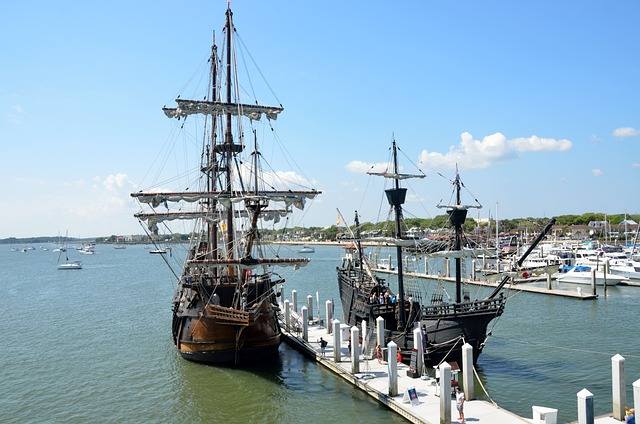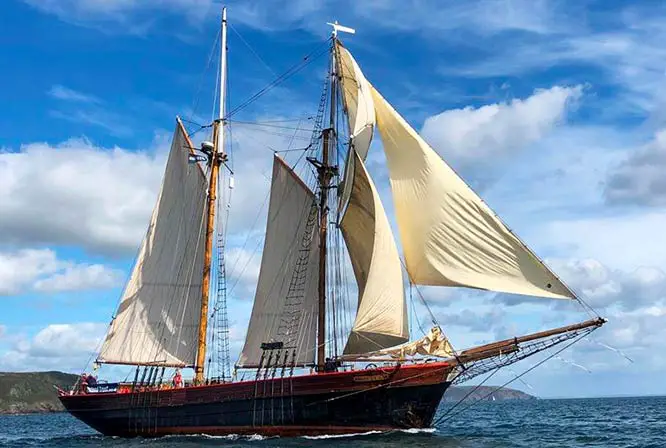Planning to take part in a Tall Ship Regatta can be an incredibly exciting endeavor. However, to ensure that everything goes smoothly during the event, participants need to be well-prepared in advance.
Whether you’re an experienced sailor or have never set foot on a ship before, these preparations are essential to ensure that you’re ready to take on the challenge of this thrilling event.
In this article, we’ll provide comprehensive guidance on how to prepare for a Tall Ship Regatta, covering areas such as training, safety, equipment, and logistics. Our aim is to equip you with the knowledge and resources you need to enter the regatta with confidence and ease.
What to Expect
A tall ship regatta can last from a few days to a few weeks, depending on the route and the number of ports involved. During this time, you will be living and working on board a tall ship, sharing the duties and responsibilities with the rest of the crew. You will also have the opportunity to learn about sailing, navigation, history, culture, and the environment.
Depending on the type of regatta, you might be racing against other ships or sailing in formation with them. Either way, you will need to follow the instructions of your captain and your watch leader, and cooperate with your fellow sailors. You will also need to respect the rules and regulations of the event organizers and the host ports.
A tall ship regatta can be physically and mentally demanding, but also rewarding and fun. You will face various challenges and adventures on land and sea, such as changing weather conditions, technical issues, cultural differences, and unexpected situations. You will also make new friends, discover new places, and create lasting memories.
How to Prepare
Before you embark on a tall ship regatta, there are some things you can do to prepare yourself for the adventure. Here are some suggestions:
Do some research on the ship you will be sailing on. Learn about its history, specifications, layout, equipment, and safety features. You can find this information on the ship’s website or brochure, or ask the crew directly.
Do some research on the route and the ports you will be visiting. Learn about their geography, climate, culture, history, and attractions. You can find this information on the event’s website or brochure, or ask the crew or the organizers directly.
Training
Training is the essential foundation for any Tall Ship Regatta participant. It’s essential to ensure that you’re comfortable with the ship’s equipment and know how to comply with safety regulations aboard the vessel. Whether you’re planning to compete or join as a crew member on another vessel, it’s vital to ensure that you have the necessary skills before setting sail.
The training requirements will differ based on the level of participation. Those looking to compete must ensure they have the appropriate certification and training experience, while crew members must be familiar with basic safety, maneuvering, and communication procedures.
Safety
Safety is of utmost importance in any sailboat race, particularly when participating in a Tall Ship Regatta. Before you set foot on the vessel, ensure that you familiarize yourself with safety regulations and emergency procedures. You should know how to use safety equipment such as life jackets, lifeboats, and fireworks, among other things.
It’s crucial to understand the weather conditions and potential hazards that exist when sailing. As part of the safety protocol, it’s important to organize a safety briefing with crew members before setting sail to ensure everyone is on the same page about safety protocols and how to keep themselves and their teammates safe.
Equipment
When it comes to Tall Ship Regattas, the equipment you use can make all the difference. To ensure that you have the best chance of success, it’s important to make sure that you have the right equipment and that it’s in good condition.
In addition to safety equipment, such as life jackets and fire extinguishers, the ship should have proper technology installations, like GPS. The equipment could also include, proper sails, winches, anchoring tools, and safety cables. The equipment, such as anchors and mooring lines, must be suitable for the vessel’s size and weight.
Logistics
Logistics can play a vital role in the success or failure of a Tall Ship Regatta. Organizers need to plan every aspect of the event, from the start location and time to the rest of the route.
It’s important to understand the logistics of the Tall Ship Regatta ahead of time. Before you sign up for the event or decide to participate, research event organizers, sponsors, and the like, to ensure you’re properly informed of the event details and logistics.
What to Bring
When packing for a tall ship regatta, you should bring:
- A valid passport and visa (if required)
- A travel insurance and medical certificate (if required)
- A personal identification and emergency contact information
- A sleeping bag and pillow (if not provided)
- A towel and toiletries (if not provided)
- A water bottle and snacks (if not provided)
- A sun protection and insect repellent
- A rain gear and warm clothing
- A sailing gear and footwear
- A camera and binoculars
Wrap Up
Preparing for a Tall Ship Regatta requires significant preparation and training, but the rewards are worth the effort. Remember to focus on safety, training, equipment, and logistics, to have a successful and enjoyable experience.
With the steps mentioned above and proper preparation, you can increase your chances of having a competitive and successful experience while avoiding any associated risks. Happy sailing!



![How to Train to Become a Tall Ship Sailor [6 Steps] How to Train to Become a Tall Ship Sailor [6 Steps]](https://www.tallshipssunderland.com/wp-content/uploads/2023/03/tall-ship-sailor-150x150.jpg)


